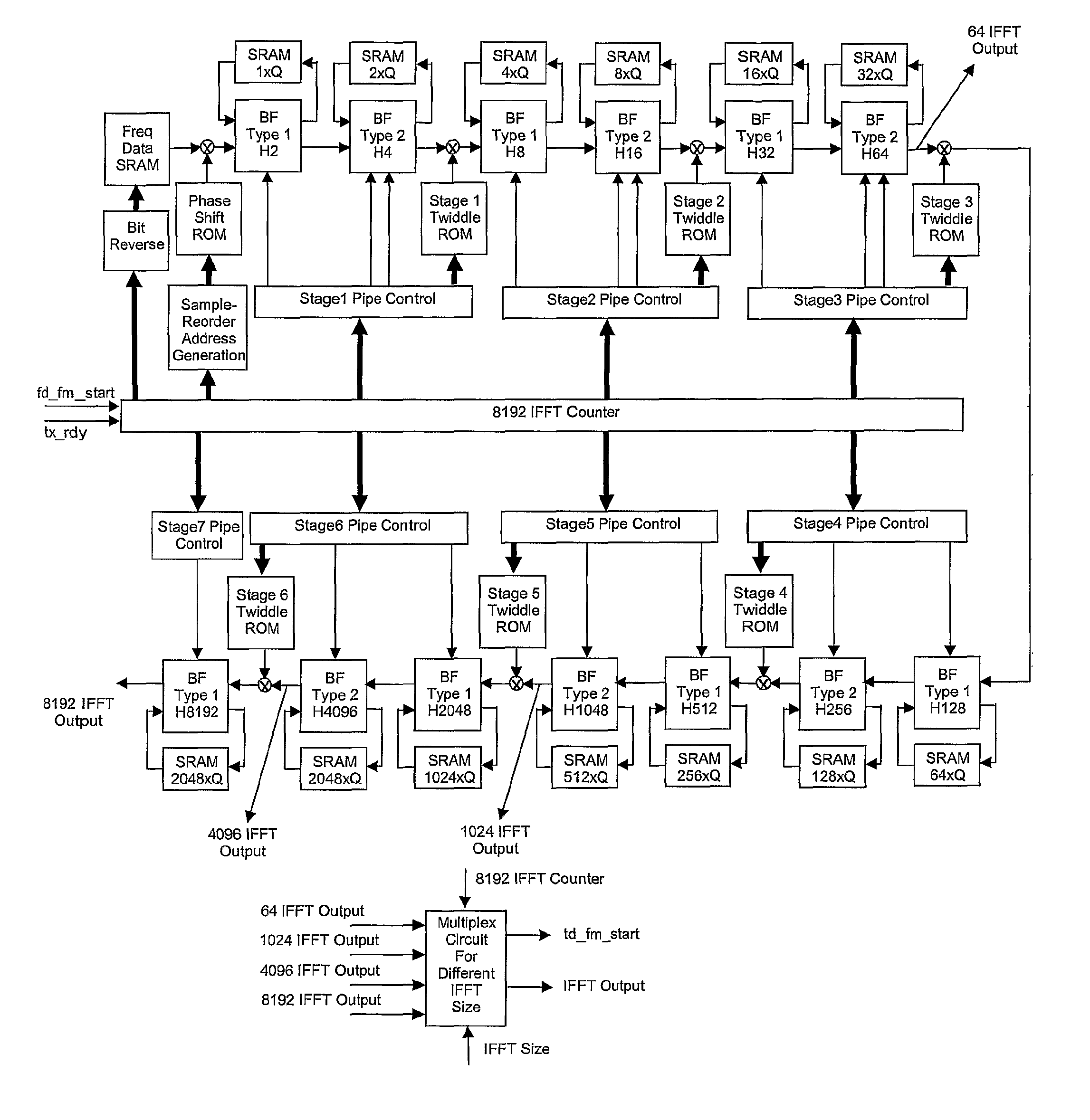VDSL2 transmitter/receiver architecture
a transmitter/receiver and receiver technology, applied in digital transmission, instruments, computers with plugboards, etc., can solve the problems of large die area, low yield, and large memory occupied by large die area, and achieve the effect of minor hardware cost and additional hardware cost on the receiver sid
- Summary
- Abstract
- Description
- Claims
- Application Information
AI Technical Summary
Benefits of technology
Problems solved by technology
Method used
Image
Examples
Embodiment Construction
[0040]Mixed Radix-2 and Radix-22 Based IFFT Design
[0041]First, we derive the basic mathematics formula for mixed radix-2 and radix-22 based IFFT with a decimation-in-frequency ordering. The reason we apply the decimation-in-frequency ordering algorithm is due to the fact that we want the sampling data produced by IFFT to be in natural order so that we would be able to reduce memory requirement for time-domain buffering. Section 4 will give further explanation regarding the time-domain buffer reduction.
[0042]Assume the IFFT size is N, the direct IFFT computation can be written as
[0043]d(n)=∑k=0N-1f(k)ⅇj2πNkn,
where d(n), n=0, 1, . . . , N−1 is time-domain output, f(k), k=0, 1, . . . , N−1 is the frequency domain input, and
[0044]ⅇj2πNkn
is the so-called twiddle factor, f(k). The first step is to split the above computation with radix-2 in frequency as follows:
[0045]d(n)= ∑k=0N2-1f(2k)ⅇj2πN2kn+∑k=0N2-1f(2k+1)ⅇj2πN(2k+1)n=∑k=0N2-1f(2k)ⅇj2π(N / 2)kn+ⅇ...
PUM
 Login to View More
Login to View More Abstract
Description
Claims
Application Information
 Login to View More
Login to View More - R&D
- Intellectual Property
- Life Sciences
- Materials
- Tech Scout
- Unparalleled Data Quality
- Higher Quality Content
- 60% Fewer Hallucinations
Browse by: Latest US Patents, China's latest patents, Technical Efficacy Thesaurus, Application Domain, Technology Topic, Popular Technical Reports.
© 2025 PatSnap. All rights reserved.Legal|Privacy policy|Modern Slavery Act Transparency Statement|Sitemap|About US| Contact US: help@patsnap.com



